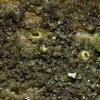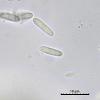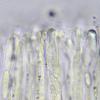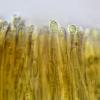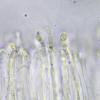
10-03-2025 18:51
Juuso ÄikäsThese apparent Cryptodiscus fruitbodies with a pal

15-02-2025 22:05
 Robin Isaksson
Robin Isaksson
Hi!Anyone knows this?Conidia around 6-11 x 6-8 um,

08-03-2025 16:21
Yanick BOULANGERBonjourDialonectria episphaeria sur Diatrype stigm

09-03-2025 08:32
Me mandan el material seco de Galicia (España) re

08-03-2025 08:47
 Danny Newman
Danny Newman
Hello AscoFrance, I believe I may have found the

06-03-2025 21:53
 Charles Grapinet
Charles Grapinet
Hello, I found a very abundant Phaeosphaeria on t

06-03-2025 17:23
Found 13/2/25 on moss, very far away, only almond

06-03-2025 23:27
 Edvin Johannesen
Edvin Johannesen
Hello!I have a collection with acervuli of Asteros
Cryptodiscus on Pinus
Juuso Äikäs,
10-03-2025 18:51
These apparent Cryptodiscus fruitbodies with a pale margin were growing on a fallen, decorticated Pinus sylvestris branch in a mesic heath forest.
Asci narrow, 8-spored, IKI negative (not sure about croziers). Paraphyses with a swollen, sometimes irregularly shaped tip.
Spores 2-celled, measuring 7.5 - 9.7 × 2.0 - 2.6 µm, Q = 2.9 - 4.9; avg = 8.4 × 2.3 µm, Qav = 3.8; n = 8.
I think the macro and micro would support C. foveolaris, but that species is supposed to grow on hardwood. Could this still be it, or is there another alternative?
Lothar Krieglsteiner,
10-03-2025 18:54

Re : Cryptodiscus on Pinus
I do not know a reason why C. foveolaris should not grow on conifer would, occasionally. I think it fits rather well - without having a very close sight.
Yours, Lothar
Yours, Lothar
Hans-Otto Baral,
10-03-2025 21:24

Re : Cryptodiscus on Pinus
I saw it only once on a conifer (Pinus), but many dozen times on angiosperms. Cryptodiscus pini has larger curved spores and is much darker.
Juuso Äikäs,
10-03-2025 22:00
Re : Cryptodiscus on Pinus
Thanks Lothar and Zotto. I guess I'll name this C. foveolaris then.
I'm also rather familiar with C. pini -- it seems to be very common here. In fact I found it on the same trip on another branch just minutes before, and have found it before many times with almost no effort.
